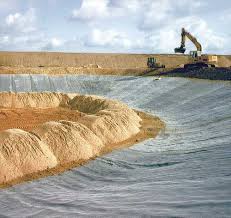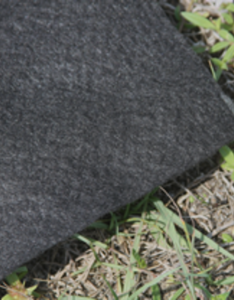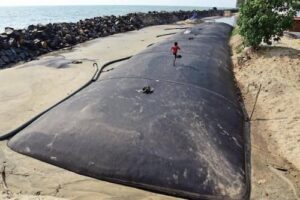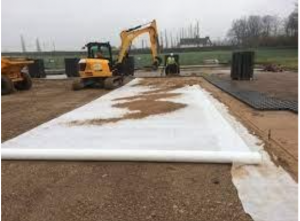Geosynthetic Clay Liners or GCLs in Landfill Engineering
Landfill engineering is quite underrated, with landfills referred to as “dumps.” A critical component of a well-conceived waste management plan, landfills are, in reality, highly engineered facilities. In particular, the design and management of MSW or municipal solid waste landfills carry environmental significance. The site, design, construction, and operation of landfills require stringent compliance with government and environmental guidelines. Each landfill engineering project is unique and comes with many design and operational considerations. Erosion, sedimentation, storm water management, leachate management are some common considerations. Geosynthetics, the current rage in geotechnical, civil, and environmental engineering, find immense utility in landfill construction as well. Here, we explore the role of geosynthetic clay liners or GCLs in landfill engineering.
Table of Contents
For all your landfill engineering projects, big and small, Ocean Geosynthetics have the perfect array of GCLs.
The massive industrialization, urbanization, infrastructure, and population explosion are generating a humongous amount of waste in India. Improper waste management takes a toll on the environment and can wreak havoc on the general health of citizens. Providing a robust solution to all the problems and challenges of landfills and MSW are the geosynthetic clay liners. Geosynthetic Clay Liner in landfill engineering is gaining increasing acceptance as the most appropriate barrier in solid waste management.
Fundamental Landfill Design:
The primary aim of a landfill is to ensure zero contamination of the environment from chemical, solid, or liquid wastes. It must prevent the percolation of harmful liquid into groundwater and avoid the escape of toxic gaseous emissions into the atmosphere. Landfills are therefore well-engineered and well-managed structures that help dispose of solid wastes in compliance with regulations.
GCLs in Landfill Engineering:
Functioning as a hydraulic barrier, the GCLs in landfill engineering are becoming increasingly popular. Geosynthetics are known for their properties of filtration, separation, reinforcement, drainage, and stabilization.
GCLs are a high-performance and cost-effective geocomposite alternative to traditional compacted clay liners. A geosynthetic clay liner in landfill comprises two layers of geotextiles enclosing a layer of sodium bentonite (natural sealant). The layer of bentonite swells on coming in contact with water.
Long-lasting resistance to chemical breakdown, physically robust to withstand harsh environments, and super-efficient as containment systems, the GCLs are a perfect solution for landfills. The lower the permeability and conductivity, the higher is the efficiency of GCLs, minimizing seepage. Self-sealing properties reduce the risk of puncture, and the geosynthetic clay liner in landfill also have excellent shear resistance. Additionally, the ease of installation and cost-effective nature of GCLs make it a natural choice for landfill engineers.
Within the context of landfill engineering, here are some of the typical GCL applications:
- Base liners in landfills.
- Surface liners
- Gaseous seals or caps
- Secondary containment
- Tailings containment
- Waterproofing
- Groundwater protection
- Vertical barriers
Geosynthetic clay liners are thus a vital component of landfill designs. They are robust and versatile products that meet the required safety standards. GCLs not just reduce construction time and cost but are also highly environmentally friendly, helping us preserve our natural environment.
Contact Ocean Global for the next-gen chemically inert geosynthetic clay liners with improved safety against liquid and/or gaseous seepage. Our team is committed to providing you products in accordance with your landfill site requirements.




